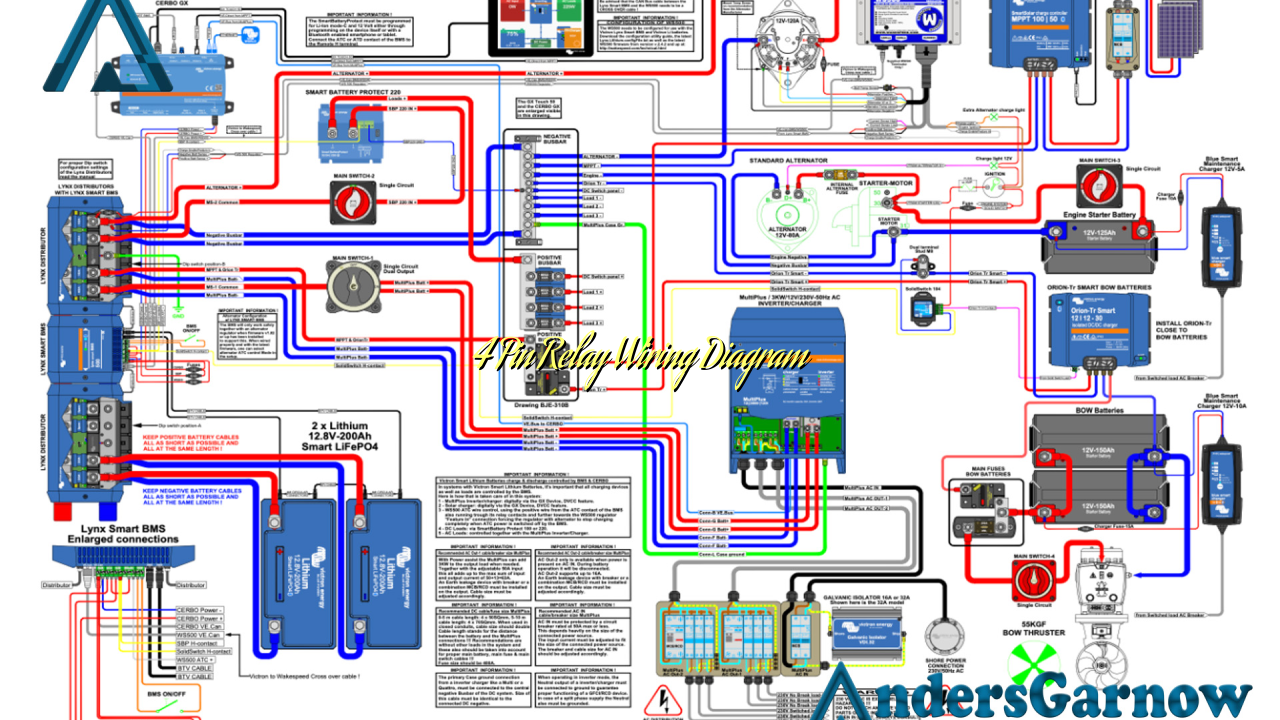Hello readers! In this article, we will discuss in detail the wiring diagram of a 4 pin relay. A relay is an electro-mechanical device that enables the control of a circuit by an electric signal. Understanding how to properly wire a 4 pin relay is essential for various applications, including automotive, industrial, and home automation systems. So, let’s dive into the details and explore the world of 4 pin relay wiring diagram.
1. What is a 4 Pin Relay?
A 4 pin relay is a type of relay that consists of four pins or terminals: two for the control circuit and two for the load circuit. The control circuit pins are used to activate the relay, while the load circuit pins are responsible for carrying the current to the connected device. This type of relay is commonly used in automotive applications for controlling various electrical components such as lights, horns, and fans.
2. Pin Configuration
The pins of a 4 pin relay are labeled as follows:
| Pin Number | Description |
|---|---|
| Pin 30 | Common (COM) – Connected to the power source |
| Pin 85 | Control (C1) – Connected to the positive terminal of the controlling device |
| Pin 86 | Control (C2) – Connected to the negative terminal of the controlling device |
| Pin 87 | Normally Open (NO) – Connected to the device being controlled |
It’s important to note that some relays may have a fifth pin, called the Normally Closed (NC) pin, which is not used in all applications.
3. Wiring the 4 Pin Relay
Now let’s discuss how to wire a 4 pin relay:
– Connect Pin 30 to the power source. This is usually the positive terminal of the battery or a fused power supply.
– Connect Pin 85 to the positive terminal of the controlling device, such as a switch or a control module.
– Connect Pin 86 to the negative terminal of the controlling device.
– Connect Pin 87 to the device you want to control, such as a light bulb or a motor. This pin acts as a switch and carries the current to the device when the relay is activated.
It’s important to follow the wiring diagram and ensure proper connections to avoid any electrical issues or malfunctions.
4. Advantages of Using a 4 Pin Relay
The use of a 4 pin relay offers several advantages:
– Versatility: A 4 pin relay can be used in various applications due to its simple and flexible design.
– Control: It allows for the control of high-current devices using a low-current signal.
– Protection: Relays provide protection to the controlling device by isolating it from the high-current load circuit.
– Efficiency: Relays are efficient in terms of power consumption and can handle large currents without overheating.
5. Disadvantages of Using a 4 Pin Relay
While 4 pin relays are widely used, they also have some limitations:
– Complexity: Wiring a relay requires some understanding of electrical circuits and basic wiring techniques.
– Size: Relays can be relatively large compared to other electronic components, which may limit their use in compact designs.
– Cost: Depending on the brand and quality, relays can be more expensive than other switching devices.
6. Alternatives to 4 Pin Relay Wiring Diagram
There are alternative ways to achieve similar functionality to a 4 pin relay:
– Transistors: Transistors can be used as electronic switches to control the flow of current in a circuit. They are smaller in size and can be more cost-effective for certain applications.
– Solid State Relays: These relays use semiconductor devices instead of mechanical switches, providing faster switching speeds and longer lifespan.
7. Frequently Asked Questions (FAQ)
Q: Can I use a 4 pin relay for high-current applications?
A: Yes, 4 pin relays are capable of handling high currents, but it’s important to choose a relay with the appropriate current rating.
Q: How can I test a 4 pin relay?
A: You can test a 4 pin relay using a multimeter to check for continuity and proper switching functionality.
Q: Can I use a 4 pin relay in a 5 pin relay socket?
A: Yes, a 4 pin relay can be used in a 5 pin relay socket. The unused pin (NC) can be left unconnected.
Conclusion
In conclusion, understanding the wiring diagram of a 4 pin relay is crucial for controlling various electrical devices. By following the proper wiring techniques, one can effectively utilize the advantages of a 4 pin relay, such as versatility, control, protection, and efficiency. However, it’s important to consider the limitations and explore alternative solutions based on specific application requirements. Always refer to the manufacturer’s instructions and consult with a professional if needed. Happy wiring!

